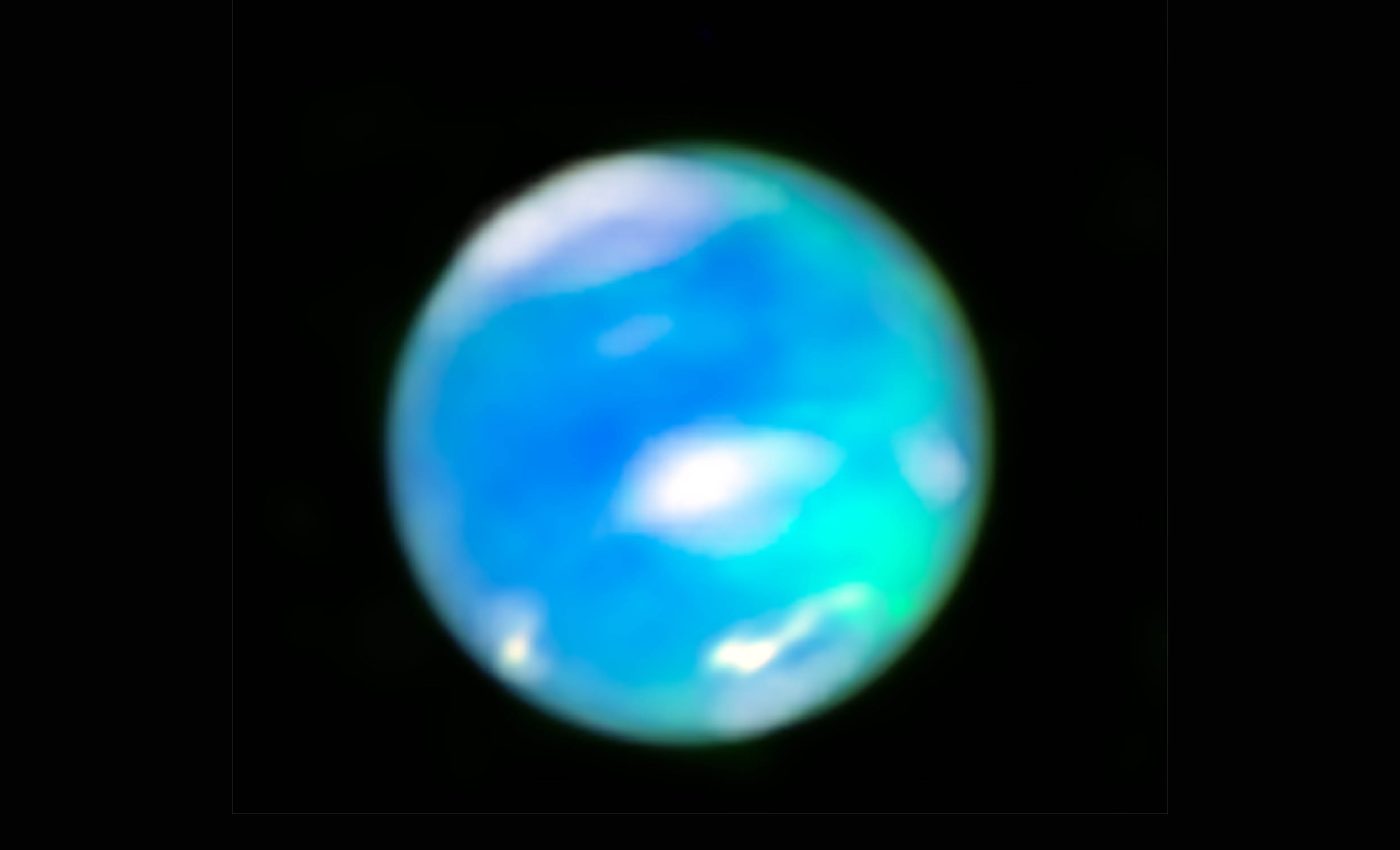
Auroras on Neptune seen for the first time, thanks to the Webb Telescope
For the first time, Neptune’s auroras are no longer just a matter of speculation. Thanks to NASA’s James Webb Space Telescope (JWST), astronomers have captured vivid images of auroral activity lighting up the planet’s upper atmosphere.
The data show energetic particles striking Neptune’s ionosphere and releasing a glowing signature.
These particles, often from the Sun, travel along magnetic fields before colliding with the atmosphere. This interaction creates the bright emissions that are now visible in Webb’s near-infrared images.
Although the auroras of other gas giants – Jupiter, Saturn, and Uranus – have been seen before, Neptune’s lights have remained elusive.
Neptune’s auroras finally confirmed
NASA’s Voyager 2 hinted at auroras on Neptune during its 1989 flyby, but no instrument has since been able to confirm it. The giant blue planet has kept its secrets, despite years of observation with Earth’s best telescopes.
“Turns out, actually imaging the auroral activity on Neptune was only possible with Webb’s near-infrared sensitivity,” said lead author Henrik Melin of Northumbria University, who conducted the research while at the University of Leicester.
“It was so stunning to not just see the auroras, but the detail and clarity of the signature really shocked me.”
Webb captured the images in June 2023 using its Near-Infrared Spectrograph. Astronomers also collected spectral data to analyze Neptune’s atmospheric temperature and chemical makeup.
For the first time, they clearly identified a strong emission line from H3+, a molecule formed during auroras. The signature glow of H3+ showed up as cyan-colored splotches in Webb’s Neptune images.
What H3+ tells us about Neptune
H3+ acts as a reliable marker for auroral activity in gas giants. Scientists have used it to track auroras on Jupiter, Saturn, and Uranus, but Neptune resisted.
Heidi Hammel is the Webb interdisciplinary scientist at the Association of Universities for Research in Astronomy (AURA), and the leader of the Guaranteed Time Observation program through which the data were obtained.
“H3+ has been a clear signifier on all the gas giants – Jupiter, Saturn, and Uranus – of auroral activity, and we expected to see the same on Neptune, as we investigated the planet over the years with the best ground-based facilities available,” explained Hammel. “Only with a machine like Webb have we finally gotten that confirmation.”
This discovery confirms what astronomers suspected all along. The evidence was hidden – not absent.
Neptune’s magnetic tilt changes with auroras
Unlike Earth, where auroras dance near the poles, Neptune’s appear in the mid-latitudes. On Earth, this would mean auroras above places like South America.
The reason lies in Neptune’s magnetic field. Voyager 2 found it tilted 47 degrees off the planet’s rotation axis. This tilt shifts where the field lines converge, moving the auroras far away from the expected polar zones.

The odd geometry adds complexity to Neptune’s space weather. Understanding it helps scientists map how solar particles interact with distant planetary fields.
A cooler Neptune holds more secrets
Webb’s data also revealed that Neptune’s upper atmosphere has cooled significantly since 1989.
“I was astonished – Neptune’s upper atmosphere has cooled by several hundreds of degrees,” Melin said. “In fact, the temperature in 2023 was just over half of that in 1989.”
Colder temperatures weaken auroral brightness. This explains why Neptune’s light shows escaped detection for decades.
The chilling data point to a dynamic upper atmosphere on this giant planet – one capable of massive temperature shifts, even at a distance of 30 astronomical units from the Sun.
New paths for future missions
These fresh insights mark the beginning of a new era in ice giant exploration.
Scientists now plan to monitor Neptune over a full solar cycle, which lasts around 11 years. Understanding changes in solar activity may reveal more about Neptune’s magnetic field and atmospheric shifts.
“As we look ahead and dream of future missions to Uranus and Neptune, we now know how important it will be to have instruments tuned to the wavelengths of infrared light to continue to study the auroras,” said Leigh Fletcher of Leicester University, who was a co-author on the paper.
“This observatory has finally opened the window onto this last, previously hidden ionosphere of the giant planets.”
The Webb observations were conducted as part of Hammel’s Guaranteed Time Observation program 1249. The results open new paths to explore the mysteries of our solar system’s outermost worlds.
The study’s results have been published in Nature Astronomy.
Image Credit: NASA
—–
Like what you read? Subscribe to our newsletter for engaging articles, exclusive content, and the latest updates.
Check us out on EarthSnap, a free app brought to you by Eric Ralls and Earth.com.
—–













